Who is Terry Cox?
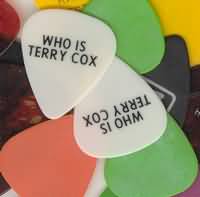
I was born and grew up in Madison, Indiana, an historic port town on the Ohio River about midway between Louisville and Cincinnati. The small city was founded a few years before Indiana became a state, so the town boasts an abundance of Federal-era architecture. If you're ever passing through the region, make sure you take time to tour the city.
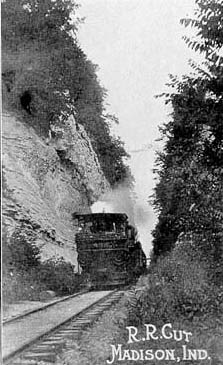
(At left is a view of the Madison & Indianapolis Railroad grade at the west end of Madison. This line ultimately became a branch of the Pennsylvania RR. The 5.89% the grade climbing out of the Ohio River valley is the steepest non-cog rail grade in the U.S.)
I went to Indiana University during the late 1960s and early 70s. I avoided most of the unrest and student protests by spending a tremendous amount of time underground. By "underground," I mean exploring and mapping caves. I loved mapping and you may still find my name associated with maps of caves of southern Indiana plus a few in Kentucky and central Mexico.
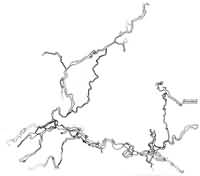
(At right is a map of Wayne Cave near Bloomington, Indiana. This tiny illustration shows over 3 miles of passages. Greg Spaulding and I mapped this cave in the early 1970s. )
Caving is known as "spelunking" by non-cavers. That hobby led me to degree in geology. When not underground during that time, I was honored to work for both the Indiana State Geologist and the State Coal Geologist at the Indiana Geological Survey.
My first job after graduation was working for Amax Coal Company, evaluating coal properties for acquisition, in the Appalachian Mountains from Alabama to Pennsylvania. I cannot imagine how many surface and underground coal operations I visited during those years, but it seemed like I was underground continually.
Working in the East was great fun, but my many hiking trips in the Grand Canyon drew me west. I moved to Denver, Colorado where I worked for Rocky Mountain Energy, a subsidiary of the Union Pacific Corporation. Over the next decade, I spent the majority of my time evaluating large coal properties for purchase.
That work gave me the wonderful opportunity to work in every major coal field in the western United States, from Texas to Alaska. It also taught me about corporate negotiations and financing.
Oil and gas prices collapsed in the late 1980s, which large numbers of power plants to switch from coal to gas. Good for them; bad for coal geologists. Realizing that coal was not going to bounce back like it had in previous price convulsions, I moved on to other endeavors including consulting in non-energy metals.
In 1989, Pruett Publishing published my first book, Inside the Mountains, a history of mining around Central City, Colorado. In 2021, several friends conspired and convinced me to re-publish Inside the Mountains and write another book titled, The Great Argo Project: The Tunnel, Mill, and Millionaire. Both books became available in 2022.
Between 1985 and 1992, I dealt in collectible paper money including fractional currency, obsolete currency, large U.S. currency, souvenir cards, Confederate currency, and Confederate bonds. Sometime in about 1988, I encountered my first opportunity to sell railroad stocks and bonds.
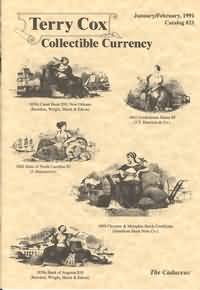
It took only minutes to realize that information about stock and bond prices was nearly non-existent. There were three small, now-classic volumes by George LaBarre, but little else. (LaBarre's books are occasionally acquirable from numismatic book sources and similar out-of-print book sellers. Out of desperation, I started collecting information about certificate prices on my own.
I loved selling paper. In fact, I loved selling paper much more than collecting it. Unfortunately, there is one major problem with selling collectibles. You cannot make money selling if you're not also a great buyer. I wasn't. I always paid too much. I decided to stop selling paper money in 1992, but I continued to sell railroad stocks and bonds for another year.
Looking back, I realize I have been involved in collectibles almost continually since about 1958. As weird as it may seem, I enjoy collecting and compiling information more than acquiring collectibles themselves. As a result, I kept collecting more and more and more information about stock and bond prices.
Even today, selling collectible paper remains a part-time occupation, but I continued with other more lucrative money-making endeavors. I taught a few courses on business writing while I played geologist for an engineering firm. My wife and I also started and ran a small bookstore in the Colorado high country for several years.
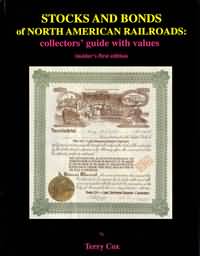
Without intending to, I compiled sufficient information by 1994 to publish my work about stocks and bonds from railroads in North America. BNR Press kindly accepted the project and published my work in December, 1995. Examples of that first edition appear for sale on eBay occasionally.
The Union Pacific Railroad purchased the Southern Pacific Railroad in 1997. Since we already had a working relationship with "Uncle Pete" (the U.P.), another RME employee and I formed a partnership to index about 13,000 Southern Pacific alignment maps for the Union Pacific Railroad. That project led to an even larger, 15-year project of scanning and indexing 90,000 maps, reports, documents, and air photos for a major U.S. oil company.
The first edition of my catalog had sold out by the end of the 1990s, by which time, the amount of new information about railroad stock and bond prices had doubled the size of my database. While BNR wanted to publish the second and successive editions, scheduling problems delayed publication several times. As a bridge between the first and second editions, I started this website in June, 2000. That invited a flood of new correspondents and new submittals, making the second edition even more imperative.
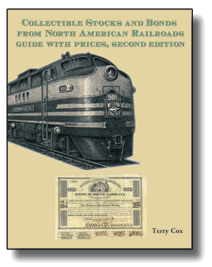
Late in 2002, I realized that I would need to publish the second edition myself. Self-publishing was not what I wanted to do. It is a big hassle and is NOT a money-making venture. However, like caving, mining history, and our bookstore, this ongoing project was a labor of love. I finally published the second edition in November, 2003.
The database of information continues to grow ever-larger with the continual contributions from collectors around the world. About 75% of my current correspondents live in the United States with most of the remainder in Germany. This wide-ranging group of people is crucial because not all U.S. railroad certificates are available on both sides of the Atlantic Ocean. Some certificates sell only in the U.S. and some sell only in Europe.
This website contains over a million records of sales or attempted sales of stocks and bonds. I also write a column about collecting stocks and bonds titled Cox's Corner for the hobby magazine, Scripophily (a publication of The International Bond and Share Society.)
After an additional fifteen years, I decided to publish the third edition of "Collectible Stocks and Bonds from North American Railroads" (below left.) The book is shipping and now lists about 28,000 varieties of railroad stocks and bonds.
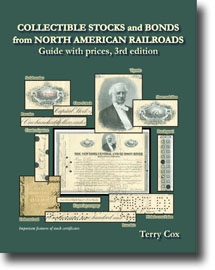
Looking back over my meager accomplishments, I discovered the single, recurring theme that I had built my life around. Whether caving, hiking, analyzing large coal projects, or cataloging certificates, I accomplished all with partnerships. I know my own limitations only too well. I never could have accomplished this huge information-gathering project without the help of hundreds of people on two continents. What a tremendous honor!
I also discovered a higher truth. People WANT to help. Give people an opportunity to help and they get to share the enjoyment of being involved. Contributing helps all of us enjoy our hobby even more.
So, thanks. Thanks to everyone who has helped with this project. I am in your eternal debt.